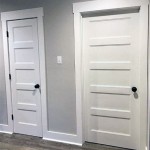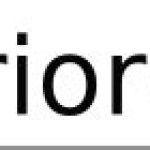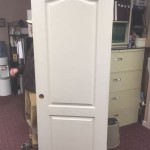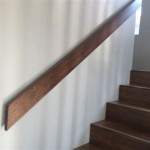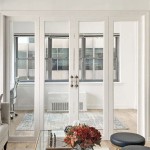Cost To Paint 3000 Sq Ft House Interior Per Square Foot
Determining the cost to paint the interior of a 3000 square foot house requires a multifaceted approach, taking into account several contributing factors. While a per-square-foot estimate provides a useful benchmark, the actual price can vary significantly based on the complexity of the project, the quality of materials, and the labor costs in a given geographic region. A thorough understanding of these variables is essential for accurate budgeting and planning.
This article will examine the various elements that influence the cost of interior painting, offering a detailed breakdown of expenses and providing guidance on how to estimate the per-square-foot cost for painting a 3000 square foot house. It will delve into the specifics of surface preparation, paint types, labor charges, and other potential add-ons, empowering homeowners to make informed decisions regarding their painting projects.
Surface Preparation and Its Impact on Cost
Surface preparation is a crucial step in any interior painting project, and its thoroughness directly affects both the final appearance and the longevity of the paint job. Proper preparation ensures optimal adhesion and a smooth, uniform finish. This process can significantly impact the overall cost per square foot.
Before any paint can be applied, walls and ceilings often require cleaning to remove dirt, dust, grease, and other contaminants. This may involve washing surfaces with a mild detergent solution and rinsing thoroughly. For areas with stubborn stains or mildew, specialized cleaning products may be necessary, adding to the material cost.
Repairing imperfections such as cracks, holes, and dents is another critical aspect of surface preparation. Minor cracks can be filled with spackle or joint compound, while larger holes may require patching with drywall. Sanding the repaired areas smooth is essential to create a seamless surface. The amount of repair work needed will influence the overall time and materials required, thus impacting the per-square-foot cost.
In some cases, wallpaper removal may be necessary. This can be a time-consuming and labor-intensive process, especially if the wallpaper is old or poorly adhered. The cost of wallpaper removal can vary widely depending on the type of wallpaper, the number of layers, and the condition of the underlying wall. If wallpaper removal is required, it will substantially increase the per-square-foot painting cost.
Priming is often recommended, particularly on new drywall, patched areas, or surfaces with existing stains. Primer seals the surface, promotes adhesion, and provides a uniform base for the paint. The type of primer used will depend on the specific surface and the type of paint being applied. While primer adds to the material cost, it can improve the paint's coverage and durability, potentially reducing the need for multiple coats of paint.
The labor costs associated with surface preparation can vary significantly depending on the extent of the work required. Simple cleaning and minor repairs will be less expensive than extensive patching, wallpaper removal, or significant surface restoration. It is essential to obtain detailed estimates from painting contractors that clearly outline the costs associated with each aspect of surface preparation.
Paint Type and Its Contribution to the Total Expense
The type of paint selected for an interior painting project plays a crucial role in the final cost. Different paint formulations offer varying levels of durability, coverage, and aesthetic appeal, which are directly reflected in their price. Choosing the right paint type is essential for achieving the desired results while staying within budget.
Latex paint is the most common type of paint used for interior painting. It is water-based, easy to apply, and relatively low in volatile organic compounds (VOCs). Latex paint is available in a variety of finishes, including flat, eggshell, satin, semi-gloss, and gloss. Each finish offers different levels of sheen and durability, with higher-gloss finishes being more resistant to stains and moisture but also more likely to highlight imperfections.
Oil-based paint, also known as alkyd paint, is less commonly used for interior painting due to its higher VOC content and longer drying time. However, oil-based paint offers excellent durability and a hard, enamel-like finish. It is often used for trim, doors, and other surfaces that require a more durable coating. Oil-based paint is typically more expensive than latex paint and requires mineral spirits for cleanup.
Specialty paints, such as those designed for kitchens and bathrooms, offer enhanced resistance to moisture, mildew, and stains. These paints are formulated with antimicrobial additives and produce a durable, washable finish. Specialty paints are generally more expensive than standard latex paints, but their added benefits can be worth the investment in areas prone to moisture or heavy use.
The quality of the paint also affects the cost. Higher-quality paints typically offer better coverage, durability, and color retention. They may require fewer coats to achieve the desired finish, saving both time and money in the long run. Lower-quality paints may be less expensive initially but may require more coats and may not hold up as well over time.
The number of coats of paint required also influences the overall cost. In general, two coats of paint are recommended for optimal coverage and color consistency. However, if the existing surface is a very different color or if a drastic color change is desired, three or more coats may be necessary. Each additional coat of paint increases the material and labor costs.
Calculating the amount of paint required for a 3000 square foot house involves measuring the total surface area to be painted. A gallon of paint typically covers 350 to 400 square feet. It's important to account for windows, doors, and other areas that will not be painted when calculating the total surface area. Adding a small buffer for spills and touch-ups is also recommended.
Labor Costs and Additional Considerations
Labor costs represent a significant portion of the overall cost of interior painting. These costs can vary widely depending on the geographic location, the experience and reputation of the painting contractor, and the complexity of the project. Understanding how labor costs are calculated is essential for accurate budgeting.
Painting contractors typically charge either an hourly rate or a fixed price for the entire project. Hourly rates can range from $25 to $75 per hour, depending on the factors mentioned above. A fixed price is generally preferred, as it provides greater cost certainty. However, it is important to ensure that the fixed price includes all aspects of the project, including surface preparation, painting, and cleanup.
The complexity of the project can significantly impact labor costs. Painting high ceilings, intricate trim work, or difficult-to-reach areas requires more time and skill, which can increase labor charges. Projects that involve extensive surface preparation, such as wallpaper removal or significant repairs, will also require more labor hours.
Geographic location plays a significant role in determining labor costs. Painting contractors in metropolitan areas typically charge higher rates than those in rural areas. The cost of living and the overall demand for painting services in a particular area can influence labor rates.
Obtaining multiple quotes from different painting contractors is essential for comparing prices and ensuring that you are getting a fair price. Be sure to ask for detailed breakdowns of the costs associated with each aspect of the project, including labor, materials, and any additional fees.
Additional considerations that can impact the cost of interior painting include furniture removal and protection, moving costs, and special finishes. Moving furniture and protecting it from paint splatters can add to the labor cost. If the homeowner is unable to move furniture themselves, the painting contractor may charge an additional fee for this service.
Special finishes, such as faux finishes or textured paints, require specialized skills and techniques, which can increase labor costs. These finishes are often more time-consuming and require more materials than standard paint finishes.
Permits may be required for certain painting projects, particularly in older homes or those located in historic districts. The cost of permits can vary depending on the municipality and the scope of the project. It is important to check with the local building department to determine whether any permits are required.
Factoring in all the elements discussed, the per-square-foot cost to paint a 3000 sq ft house interior can range from $2 to $6 or more. This is a broad estimate. It is recommended to get multiple professional quotes to ascertain accurate costs for a specific project, taking into account detailed requirements and local market rates.

Cost To Paint A House Whole Painting Fixr

How Much Does It Cost To Paint The Interior Of A House In Paintrite Pros

Interior Painting Cost Per Square Foot Home Painters Toronto

Cost Of Painting A House Interior Comprehensive Guide

How Much Does Interior House Painting Cost A New Leaf

Interior Painting Costs Per Square Foot Home Painters Toronto

How Much Does It Cost To Paint The Interior Of A House In Paintrite Pros

Average Cost To Paint A House Coloradopainting Com

How Much Does It Cost To Paint The Interior Of A House Angi

How Much Does Interior House Painting Cost In 2024 Forbes Home
Related Posts

